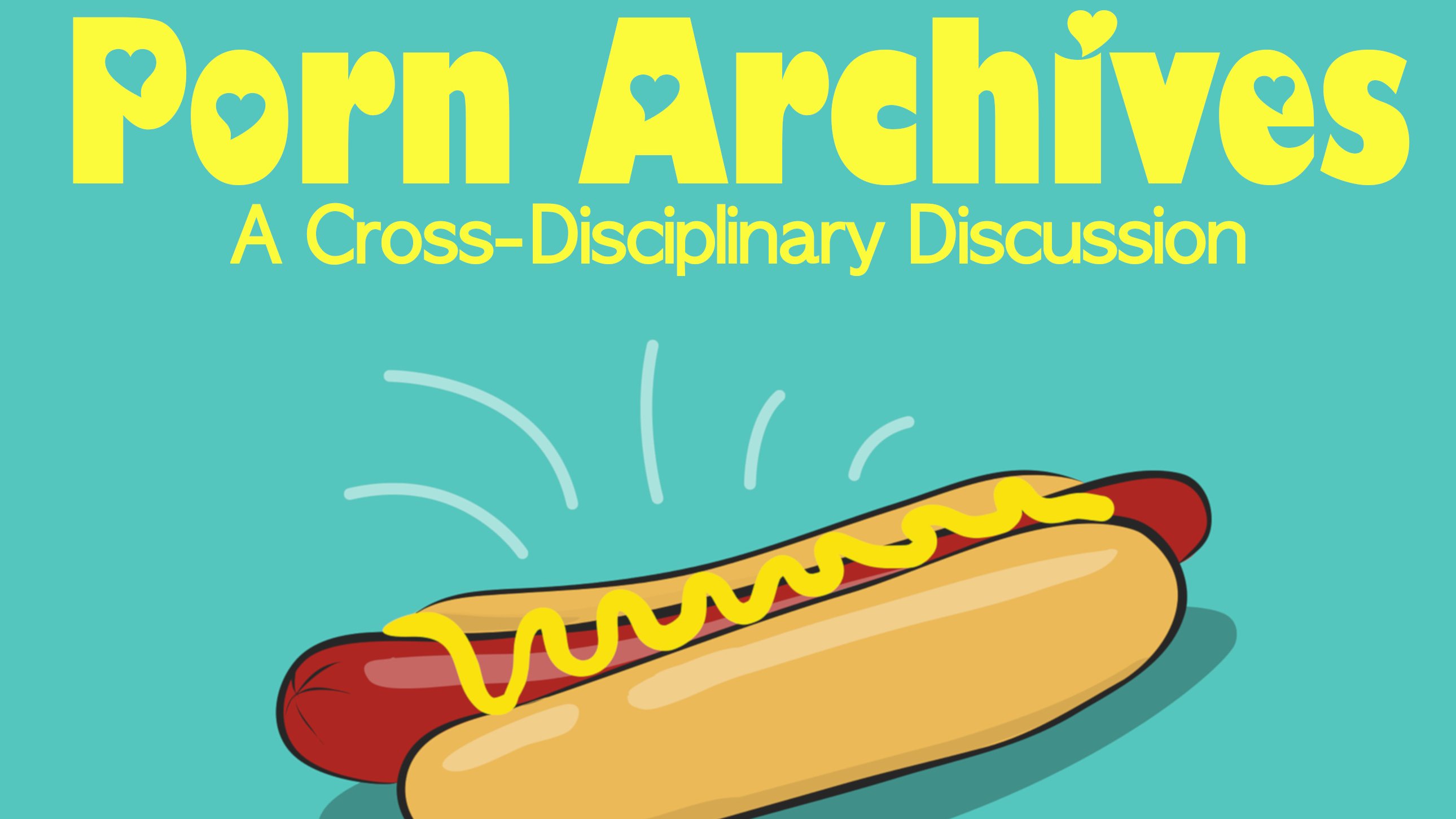Intro
Today I had the honor of being the respondent for kirstyn seanor’s (@kirstynASDF) lecture on porn archives, titled, well, Porn Archives: A Cross-Disciplinary Discussion
Here’s the tongue-in-cheek poster of the event:

Response
I am deeply appreciative of kirstyn’s discussion of interdisciplinarity and pornography. Although they say in the conclusion that this project is ultimately self-serving, I would disagree.
I think in this mediation kirstyn has served us, as listeners, with a challenge.
The challenge is cross-multi-inter- and trans-disciplinary; the challenge is for all of us to consider exactly what we mean when we say such-and-such studies—whether that’s porn studies, film studies, archival studies, or Bruce Springsteen Studies (yes that’s a real journal).
As many scholars have, kirstyn begins their mediation with the words porno & graphos. But before engage with those words, I want to begin with ‘mediation’.
Mediation is one of the oldest words we know. It dates all the way back to Indo-European. medhyo ‘middle’. But in English it gives us
from late 14c., mediacioun, “intervention” or a “action as a mediator” from Medieval Latin and then Latin, mediare “to halve; to be in the middle,”
What does it mean to ‘intervene’? to ‘halve’? to be ‘in the middle’?
I think many of us are inclined to jump to a political understanding: “There are very fine people on both sides. On one, you have folx who want to film naughty things, and on the other you got the folks who want to see you burn in eternal damnation and hellfire.”
But seriously, I think that many new fields come bursting “from the middle”. And I think library and information science is, well, the ultimate middle.
Historically, librarians, archivists, museum workers were the “handmaidens” of academia, we supported and helped and served new fields, which generated new journals and lots of professorships for white cishet male academics. Then, of course, when it all fell apart, we would be there as archivists to collect the records and preserve it for the future.
I don’t think that is happening anymore. Between archival studies, critical librarianship, and critical cataloging, we are beginning to see a formerly feminized field take shape, power and become institutionalized.
But to return again to words.
Porno. Graphos.
Porno, from the Hellenistic Greek pornei, meaning prostitutes and graphia, meaning “description of,” but, more commonly ‘drawings’ or ‘writings’.
Understandably, kirstyn, in the name of brevity, brushes through the sketchy (and and I mean sketchy in all senses of the word) history of of the word in order to bring us to porn studies.
But throughout their mediation I feel sense that there is a sense that ‘porn studies,’ whatever it is, is not necessarily a natural home for library and informational scholars.
And, in intervening & responding: I would agree. Porn Studies is not the best home or mode of analysis for library and info scholars–in fact, I would say that porn studies isn’t even the best lens for studying pornography.
Rather, I would argue that good old books should be our departure point.
After all, obscene books, plays, poetry, art, and engravings were the ones that created and shaped our modern ideas about the pornographic.
The arrival of photography and film didn’t change anything. In fact, photos and videos followed the same path that books and poetry laid down centuries earlier—only faster.
To quote from Laura Helen Marks’ Alice in Pornoland
Porn studies would richly benefit from the same selective and esoteric approach that so many other literary and media studies projects take. ‘scholars should ‘seek to historicize hardcore in a way that reaches across centuries… in an effort to tease out the genealogy of modern porn’s engagement with mainstream culture and its own past ’ (Marks, 2019)
Indeed, pornographers themselves are
obsessed with pornography [as a medium]…they are obsessed with their predecessors… So we need to think of the ‘long’ trajectory of pornography, and place ourselves and our [objects of] study in it. [The] narrative that porn is just an audiovisual medium is wrong ’ (Marks, 2019)
However, book historians, are very cross-multi-inter- and trans-disciplinary: they don’t tend to occupy one field or perspective, they come from a variety of backgrounds and contexts and need to be found where they are
Much like LIS professionals, actually. There is an insecurity, perhaps, in the joke that kirstyn began with, “write a thesis on whatever you want and then add a section at the end leading with, and in libraries”, but I don’t see this as a bad thing at all.
The intersections that we operate at and on, as people and as professionals can be limiting–but they can be infinitely generating as well.
Let us lean into the infinite.